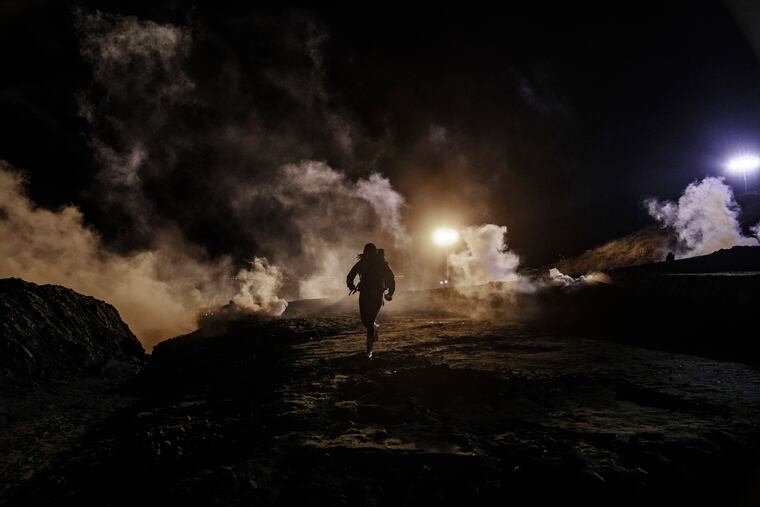Border agents fired tear gas into Mexico on New Year’s Day
U.S. authorities fired tear gas into Mexico as 150 migrants tried to breach border fence

TIJUANA, Mexico (AP) — Just after people raised their glasses to ring in the New Year, about 150 migrants gathered at a section of border wall in Tijuana to try to cross into the United States, many of them asylum seekers fed up with waiting months to have their claims processed.
On the other side, U.S. Border Patrol agents wearing camouflage and night-vision goggles and carrying assault-style rifles yelled, "Get back!" in Spanish. American activists accompanying the migrants shouted at agents in English not to fire tear gas because children were present.
Several migrants tried to climb the corrugated metal wall, prompting agents to fire the first volley of tear gas. When migrants approached the wall again, authorities fired a second round and then a third.
The migrants fled, screaming, crying and coughing. One mother was hysterical after briefly losing her children in the thick smoke and darkness.
It was the second time in a little over a month that U.S. authorities fired tear gas into Mexico. The action drew sharp criticism from politicians and activists on both sides of the border and raised questions about the use of force against migrants.
President Donald Trump on Wednesday defended the actions.
Tuesday's confrontation showed that "people tried to charge the border and couldn't," Trump said at a Cabinet meeting at the White House.
He described the border as being "like a sieve" and noted that the tear gas was "flying" overnight to deter the migrants and added that it's "very tough" to keep immigrants out.
Trump was making his case for $5.6 billion from Congress for a wall at the border and vowing that the partial government shutdown now in its 12th day will last "as long as it takes" to get the money.
U.S. Customs and Border Protection said tear gas, pepper spray, and smoke were used to target rock throwers, not the migrants who were trying to cross. It said agents could not help small children who were being passed over the concertina wire from getting hurt because of the rocks being thrown.
Several teenagers, wrapped in heavy jackets, blankets and rubber mats, were also put over the concertina wire.
An Associated Press photographer saw rocks thrown only after U.S. agents fired the tear gas. Customs and Border Protection said the incident would be reviewed to ensure compliance with the agency's use-of-force policy.
The agency said 25 migrants were detained while others crawled back into Mexico through a hole under the fence. An AP photographer saw migrants put their hands up or behind their heads once they crossed the border as agents approached.
Since a caravan of Central Americans arrived in Tijuana last month after walking, hitchhiking and taking buses across Mexico, apprehensions in the San Diego sector have jumped. Agents are now detaining about 150 migrants a day, compared with about 105 daily in 2018, authorities said.
Many of the migrants are waiting in Tijuana for a chance to apply for asylum in the U.S., but there was a backlog of more than 3,000 names before the caravan's arrival.
A few have found jobs in Mexico and tried to settle there. But thousands are still camped in a concert hall in Tijuana, growing increasingly frustrated at the long wait to apply for asylum.
On Nov. 26, U.S. agents launched tear gas across the border after some migrants tried to breach the border following a peaceful march in Tijuana. The march was to demand U.S. authorities accelerate the asylum process at official border crossings.
U.S. officials are processing fewer than 100 claims a day at the San Diego crossing, the nation's busiest.
Use of force by Customs and Border Protection has declined from a high during the 2013 budget year, when firearms were used 45 times compared with 14 times during the first 11 months of 2018, government statistics show. Since then officers have been trained to use less lethal methods such as batons, pepper spray and tear gas.
The data includes Border Patrol agents who patrol between the ports of entry and officers who police border crossings. The latest figures, which do not include this month's incidents, also show a dramatic drop in the use of less-lethal methods compared with 2013.
Associated Press Writer Colleen Long contributed to this article.